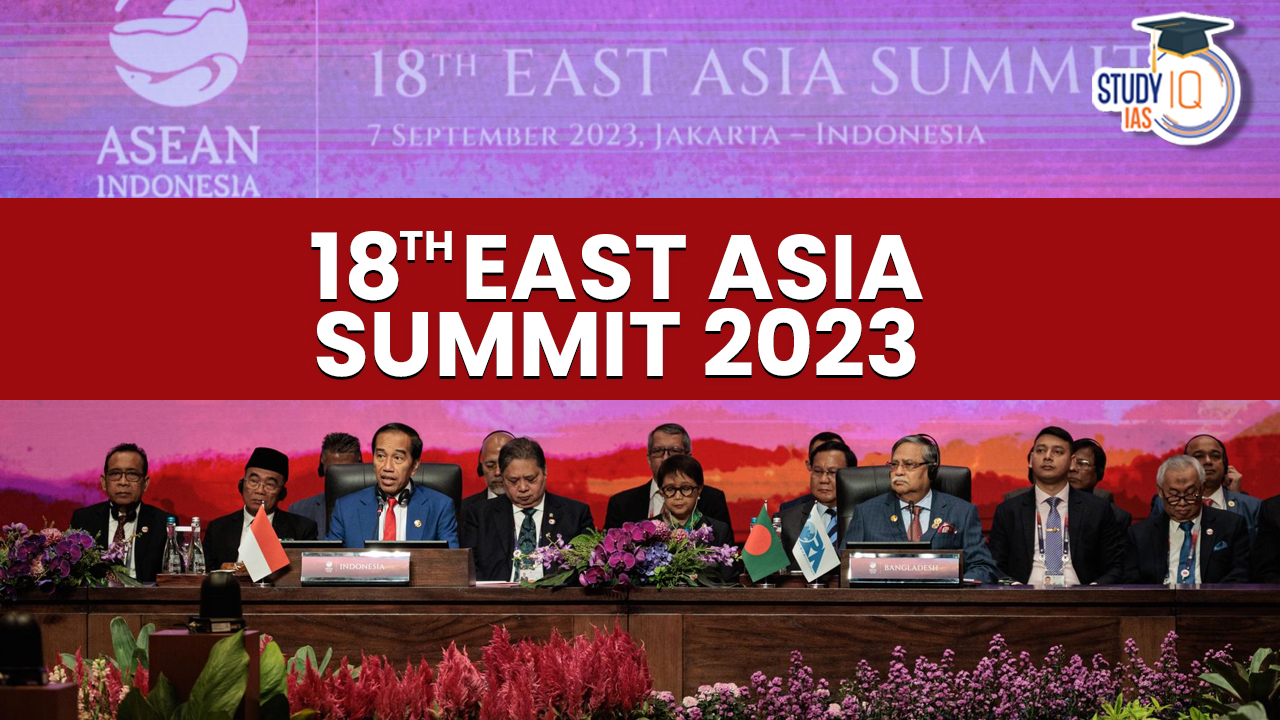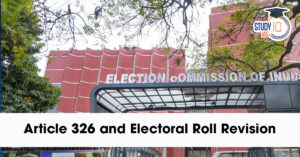Table of Contents
18th East Asia Summit
The 18th East Asia Summit, held in Jakarta, Indonesia, was addressed by President Joko Widodo of Indonesia. He expressed gratitude to the leaders of the summit for creating a platform that fosters cooperation among nations. President Widodo emphasized the importance of stability and peace in achieving prosperity and highlighted ASEAN’s commitment to being a leader in promoting this vision.
As the chair of the Association of Southeast Asian Nations (ASEAN) this year, President Widodo called for the East Asia Summit to agree on a leader’s statement and establish itself as a centre of growth. He stressed the need for wisdom and leadership among international leaders to make the world a better place.
The East Asia Summit brings together leaders from ASEAN countries and its eight dialogue partners, including India, to discuss regional and global issues. It plays a significant role in providing a platform for dialogue on strategic matters in the Indo-Pacific region.

During this summit, Prime Minister Narendra Modi and other leaders discussed ways to strengthen the East Asia Summit mechanism and exchanged views on regional and international matters. The East Asia Summit consists of ASEAN member states and various partner countries, with a focus on ASEAN’s centrality in the region.
Read about: G20 Summit
What is East Asia Summit?
The East Asia Summit (EAS) is a crucial regional forum in the Asia-Pacific region, serving as a platform for diplomatic engagement and cooperation among its member states. Comprising 18 countries, the EAS brings together leaders from diverse backgrounds, including the 10 member states of the Association of Southeast Asian Nations (ASEAN) – Brunei Darussalam, Cambodia, Indonesia, Lao PDR, Malaysia, Myanmar, Singapore, Thailand, the Philippines, and Vietnam. Additionally, it includes eight key partners: Australia, China, India, Japan, New Zealand, South Korea, Russia, and the United States.
| East Asia Summit Details | |
| Origin | The East-Asia Summit began in 2005 between 10 ASEAN countries and 6 partner countries of the grouping. |
| Participants | ASEAN (Myanmar, Thailand, Cambodia, Laos, Vietnam, Malaysia, Indonesia, Brunei, Singapore, Philippines) along with Australia, New Zealand, Japan, South Korea, India and China.
The United States and the Russian Federation joined at the 6th East Asia Summit in 2011. |
| Purpose | The summit is an annual Meeting of Heads of State/Governments of member countries, where they are able to discuss common concerns and interests. |
| Objective | The summit was set up with the idea of enhancing cooperation among East Asian countries and those in the neighbouring regions. |
| Areas of cooperation include |
|
At its core, the EAS aims to facilitate dialogue and collaboration on a wide range of regional and global issues. These discussions span political, economic, security, and socio-cultural dimensions, reflecting the complex challenges and opportunities present in the region. By providing a dedicated forum for leaders to meet and exchange views, the EAS seeks to foster greater understanding, trust, and cooperation among participating countries.
One fundamental principle underpinning the EAS is the concept of ASEAN centrality. This principle acknowledges the central role of ASEAN in shaping the agenda and discussions within the summit. ASEAN acts as a linchpin, helping bridge the diverse interests and perspectives of the participating nations, and facilitating consensus-building on various issues.
The EAS is an essential component of the region’s diplomatic architecture, as it complements other forums and initiatives, contributing to the stability, peace, and prosperity of the East Asian and Indo-Pacific region. It provides a valuable opportunity for leaders to address pressing regional challenges and explore avenues for collaboration, making it a key diplomatic event with far-reaching implications for the region’s future. In essence, the East Asia Summit stands as a testament to the importance of dialogue and cooperation in addressing complex regional and global issues.
Read about: ITPO complex
History of East Asia Summit
The East Asia Summit (EAS) is a relatively young but significant regional forum in the Asia-Pacific region. Its history can be traced back to the early 2000s when discussions on creating a broader platform for dialogue and cooperation in East Asia gained momentum.
The formal inception of the EAS took place in 2005 during the 10th ASEAN Summit in Kuala Lumpur, Malaysia. It was initiated as a response to the changing geopolitical dynamics in the Asia-Pacific region and the need for a forum that could address a wide range of political, economic, and security issues. The inaugural EAS brought together leaders from 16 countries, including the 10 member states of the Association of Southeast Asian Nations (ASEAN) and six key partner countries: China, Japan, South Korea, India, Australia, and New Zealand.
One of the guiding principles of the EAS has been the concept of ASEAN centrality, which recognizes the central role of ASEAN in shaping the agenda and discussions within the summit. This principle was critical in maintaining cohesion and unity among member countries, given the diverse interests and historical rivalries in the region.
In 2011, the EAS underwent a significant expansion of its membership. Two major global powers, the United States and Russia, were invited to join as full members, marking a significant development in the forum’s history. This expansion broadened the EAS’s reach and brought additional diplomatic weight to the discussions.
Since its establishment, the EAS has held annual summits where leaders from member countries engage in dialogue on a wide range of issues, including regional security, economic integration, environmental sustainability, and disaster management. The summit has also served as a platform for discussing global challenges, such as climate change, pandemics, and terrorism.
Purpose of East Asia Summit 2023
The East Asia Summit (EAS) serves several important purposes in the Asia-Pacific region. Its primary objectives and purposes include:
- Promoting Regional Peace and Stability: One of the central purposes of the EAS is to promote peace and stability in the East Asian and Indo-Pacific region. It provides a platform for member countries to engage in dialogue and cooperation, helping to prevent conflicts and manage regional security challenges.
- Enhancing Economic Cooperation: The EAS aims to strengthen economic ties and cooperation among member states. This includes promoting trade, investment, and economic integration, which can contribute to economic growth and development in the region.
- Addressing Global Challenges: Member countries use the EAS as a forum to discuss and coordinate responses to global challenges that affect the region. These challenges may include climate change, pandemics, natural disasters, and terrorism. Collective action is often required to address such issues effectively.
- Facilitating Regional Integration: The EAS supports regional integration efforts by promoting connectivity and cooperation in various sectors, including infrastructure development, education, and people-to-people exchanges. These initiatives help bring countries in the region closer together.
- Cultural and Diplomatic Exchange: The EAS encourages socio-cultural exchanges and cooperation among member states. This includes initiatives related to education, tourism, and cultural exchanges, fostering mutual understanding and goodwill among nations.
- Respecting ASEAN Centrality: The EAS operates on the principle of ASEAN centrality, recognizing the central role of the Association of Southeast Asian Nations (ASEAN) in shaping the agenda and discussions. This principle contributes to maintaining unity and coherence within the forum.
- Promoting a Rules-Based Order: The EAS promotes adherence to international law and a rules-based order in the region. This includes respecting maritime rights and territorial integrity and working towards peaceful conflict resolution.
Read about: G20 Presidency
East Asia Summit UPSC
The East Asia Summit (EAS) is a crucial topic for the UPSC (Union Public Service Commission) examination as it aligns with key components of the UPSC Syllabus, including international relations, regional groupings, and current affairs. Given India’s active participation in the EAS, understanding its objectives, ASEAN centrality, and the implications for India’s foreign policy is essential for candidates preparing for the UPSC. It also holds relevance in the context of global geopolitics and regional cooperation, making it a valuable area of study for UPSC aspirants. Aspirants can cover this topic in UPSC Online Coaching and practice UPSC Mock Tests to stay updated and analyze India’s role in the evolving Indo-Pacific dynamics.


 Daily Quiz 11 July 2025
Daily Quiz 11 July 2025
 Operation Baam: Baloch Separatist Group ...
Operation Baam: Baloch Separatist Group ...
 Article 326 and Electoral Roll Revision ...
Article 326 and Electoral Roll Revision ...





















